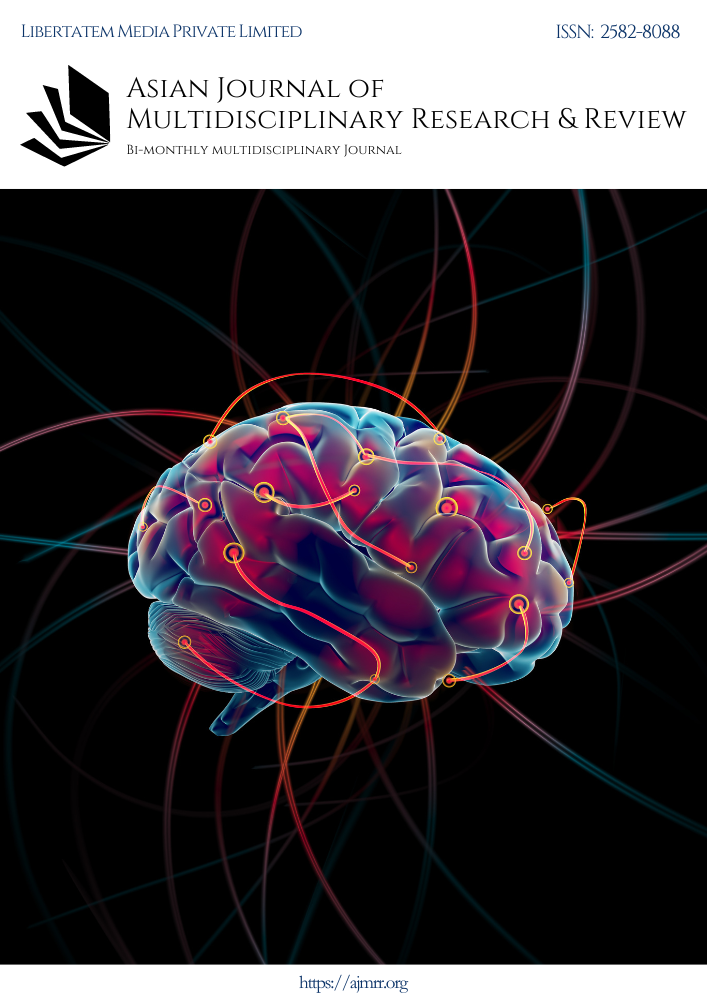THE DALIT LITERATURE IN SOUTH ASIA: A GRAPHIC NOVEL AND THE CASTE SYSTEM
Abstract
This is a book review of Bhimayana which, as a meta- text and a graphic novel, goes beyond probing the caste system prevalent in the continent of South Asia, in general, and in India, in particular. It merges the community with the individual. There are references to the past and the present memory which makes each episode polychromic where moment/time is cyclical and interruptions are acceptable. The authors have invited the readers for a new kind of reading that relies upon reading the visuals which is associated with non- linear aesthetics of a collage or montage. There is also an inter- sectionalist edge to the text where memory of the public and private meets. “Migrants engaged with past…they are not ostensibly part of.” In this context its complex since Ambedkar was a sufferer at the hands of the caste system but he denotes such experiences of his community. And the photographic images portray this individual inserted in the community memory. Documents used, thus, forge memory citizenship of the protagonist and the readers, as a part of the memory citizenship: “Untouchability is a blot on Hinduism. It is a canker eating into its vitals.” Hence, this book review carries the intention of achieving a mass consciousness, brobdingnagian awareness and cognizance amongst its readers about the caste system through a newfangled medium of canon production, i.e., a graphic novel. The Varna system came into reality from the later Vedic era, as the historians have noted, on the landmass of South Asia and dug its claws as a non-changing reality deep within the minds of the general public. And when a Dalit woman is brutally gang raped in Hathras (India), in a very recent year of 2021, it becomes an area of a modern reader to deliberate upon, as it is still not a practice of the past.
Downloads
Downloads
Published
Issue
Section
License

This work is licensed under a Creative Commons Attribution-NonCommercial-ShareAlike 4.0 International License.
License Terms
Ownership and Licensing:
Authors of research papers submitted to the Asian Journal of Multidisciplinary Research & Review (AJMRR) retain the copyright of their work while granting the journal certain rights. Authors maintain ownership of the copyright and grant the journal a right of first publication. Simultaneously, authors agree to license their research papers under the Creative Commons Attribution-ShareAlike 4.0 International (CC BY-SA 4.0) License.
License Permissions:
Under the CC BY-SA 4.0 License, others are permitted to share and adapt the work, even for commercial purposes, as long as proper attribution is given to the authors and acknowledgment is made of the initial publication in the Asian Journal of Multidisciplinary Research & Review. This license allows for the broad dissemination and utilization of research papers.
Additional Distribution Arrangements:
Authors are free to enter into separate contractual arrangements for the non-exclusive distribution of the journal's published version of the work (e.g., posting it to institutional repositories or publishing it in books), provided they acknowledge the initial publication of the work in the Asian Journal of Multidisciplinary Research & Review.
Online Posting:
Authors are encouraged to share their work online (e.g., in institutional repositories or on personal websites) both prior to and during the submission process to the journal. This practice can lead to productive exchanges and greater citation of published work.
Responsibility and Liability:
Authors are responsible for ensuring that their research papers do not infringe upon the copyright, privacy, or other rights of any third party. The Asian Journal of Multidisciplinary Research & Review disclaims any liability or responsibility for any copyright infringement or violation of third-party rights in the research papers.



